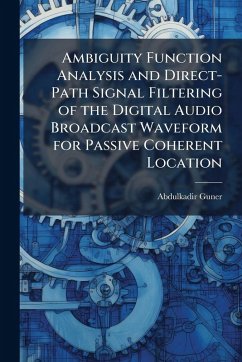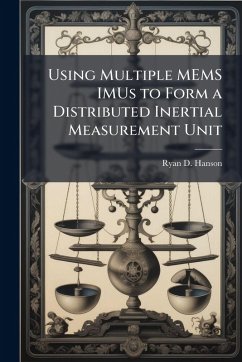
Multiple Model Methods for Cost Function Based Multiple Hypothesis Trackers
Versandkostenfrei!
Versandfertig in über 4 Wochen
18,99 €
inkl. MwSt.
Weitere Ausgaben:

PAYBACK Punkte
9 °P sammeln!
To estimate the state of a maneuvering target in clutter, a tracking algorithm must becapable of addressing measurement noise, varying target dynamics, and clutter. Traditionally, Kalman filters have been used to reject measurement noise, and their multiple model form can accurately identify target dynamics. The Multiple Hypothesis Tracker (MHT), a Bayesian solution to the measurement association problem that retains the probability density function of the target state as a mixture of weighted Gaussians, offers the greatest potential for rejecting clutter, especially when based on an advanced ...
To estimate the state of a maneuvering target in clutter, a tracking algorithm must becapable of addressing measurement noise, varying target dynamics, and clutter. Traditionally, Kalman filters have been used to reject measurement noise, and their multiple model form can accurately identify target dynamics. The Multiple Hypothesis Tracker (MHT), a Bayesian solution to the measurement association problem that retains the probability density function of the target state as a mixture of weighted Gaussians, offers the greatest potential for rejecting clutter, especially when based on an advanced mixture reduction algorithm (MRA) such as the Integral Square Error (ISE) cost function.This research seeks to incorporate multiple model filters into an ISE cost-function based MHT to increase the fidelity of target state estimation. This work has been selected by scholars as being culturally important, and is part of the knowledge base of civilization as we know it. This work was reproduced from the original artifact, and remains as true to the original work as possible. Therefore, you will see the original copyright references, library stamps (as most of these works have been housed in our most important libraries around the world), and other notations in the work. This work is in the public domain in the United States of America, and possibly other nations. Within the United States, you may freely copy and distribute this work, as no entity (individual or corporate) has a copyright on the body of the work. As a reproduction of a historical artifact, this work may contain missing or blurred pages, poor pictures, errant marks, etc. Scholars believe, and we concur, that this work is important enough to be preserved, reproduced, and made generally available to the public. We appreciate your support of the preservation process, and thank you for being an important part of keeping this knowledge alive and relevant.



![Practical Cost Keeping for Contractors [microform]; a Book Giving a System of Accurate Cost Keeping and the Methods Used for Adapting It to All Classe Cover Practical Cost Keeping for Contractors [microform]; a Book Giving a System of Accurate Cost Keeping and the Methods Used for Adapting It to All Classe](https://bilder.buecher.de/produkte/65/65494/65494246n.jpg)







![Interim Report, Georgian Bay Ship Canal [microform]: Brief Description and Detailed Estimates of Cost for Proposed Waterway Cover Interim Report, Georgian Bay Ship Canal [microform]: Brief Description and Detailed Estimates of Cost for Proposed Waterway](https://bilder.buecher.de/produkte/65/65625/65625083n.jpg)
